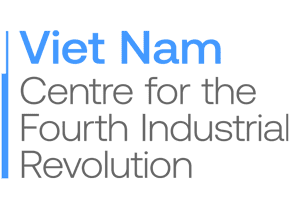Agriculture faces an existential challenge
Farmers now face prolonged droughts, erratic rainfall, unpredictable pests, and rising costs. This is not just a seasonal issue; it affects peace, economic stability, and community development.
Climate change is reducing productivity and disrupting growth cycles. In 2024, global natural disasters caused $417 billion in damages, with agriculture heavily impacted. The IPCC forecasts that by 2030, corn yields in many regions could fall by as much as 24% if emissions remain high.
It's not just crops; pests and diseases are also changing with the climate. New types of diseases are appearing in regions where they never existed before. Notably, smallholder farmers—who supply up to one-third of the world's food—are the most vulnerable group due to a lack of capital and tools to adapt.
How AI can catalyze the next agricultural revolution
AI can help agriculture become less reliant on experience and slow reactions. AI systems can now detect early signs of crop stress, disease, or pests before the human eye can see them. They analyze weather forecasts, map hotspots, and provide precise recommendations on when to intervene.
More importantly, AI acts as a "collective brain" for global agriculture. A disease that appears in Spain can immediately alert farmers in Brazil or China. Agricultural knowledge is shared and scaled rather than being siloed locally.
In practice, AI in Brazil has helped farmers detect whitefly outbreaks 3–5 weeks earlier than traditional scouting, thanks to models trained on data from many other countries.
Technology must reach farmers' hands
However, technology alone is not enough. We need to make it useful for the people who directly grow and produce our food.
Most farmers are still making decisions based on intuition or fragmented data. This is not due to a lack of expertise, but because existing tools are often expensive, complex, or disconnected from reality.
This is precisely where AI can help - if it is deployed based on a deep understanding of farmer needs. AI tools can guide when to irrigate, fertilize, or release beneficial insects. They help reduce waste, save labor, and support farmers in meeting sustainability standards. But crucially, these tools must be designed to be: simple, scalable, and affordable—especially in resource-constrained areas.
A prime example is BeeHero, a company that uses in-hive sensors combined with AI to optimize pollination, delivering detailed insights through a simple, farmer-friendly interface. Their "plug-and-play" model has enabled rapid adoption, with over 300,000 hives monitored worldwide. This is clear proof that AI can be both effective and easy to use.
Inclusivity is critical. If we are serious about making agriculture more sustainable, AI must be designed for access, not exclusivity.
Infrastructure and policy – the keys to success
The challenge lies not only in technology but also in the system. Many rural areas lack stable internet and digital literacy, making AI implementation difficult. Governments and businesses must invest in infrastructure, training, and public-private partnerships to ensure technology reflects the diversity of crops, geography, and farmer needs.
A World Bank study in West Africa showed that a combination of government, mobile operators, and NGOs helped farmers receive weather forecasts and crop advice via SMS, voice, and radio. While not yet AI, this is a critical foundation for scalable data tools later on.
At the same time, we need policy frameworks that encourage open data, fair technology standards, and innovation based on farmer interests, avoiding the replication of inequalities in land, inputs, and markets.
We cannot delay
The combination of AI and agriculture opens a massive opportunity to simultaneously address climate change, food security, and rural inequality. But time is running out. With every passing season, more crops are lost, farmers struggle, and communities are left behind.
Agriculture is the foundation of global health, education, stability, and peace. It is time to build a smarter, fairer, and more sustainable food system—not just for productivity, but for people and the planet. The new agricultural revolution is not the future; it is happening now. And we must lead it.
